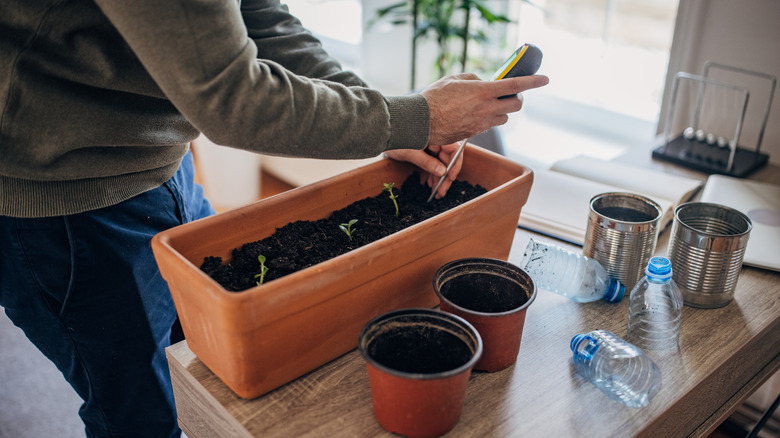Forgetting To Do This When Starting Seeds Is A Big Mistake
Though many home gardeners choose to buy young plants for their starter garden, there is something exciting about transforming tiny seeds into healthy, thriving plants. Cultivating full plants from seeds can be an incredibly rewarding experience, but it does take extra time and effort. Understanding the plants' basic needs and providing the right environment is vital. Though the focus naturally tends to revolve around soil, sun, and water, a common mistake when starting seeds is failing to keep them warm.
The ideal temperature for seeds to thrive when starting to grow depends heavily on the type of seed. While there are some general guidelines, it's essential to consult the information on your seed packet or another reputable source for the optimal germination temperature range for your specific seeds. Most seeds germinate at temperatures between 68 and 86 degrees Fahrenheit, and once they've done so, the temperatures should go about 10 degrees lower.
Checking your seeds' temperature
Providing the right temperature is not only crucial for successful seed germination but also for healthy seedling development. The first thing to know is that you should monitor soil temperature, not the air temperature. Seeds germinate based on the warmth of the soil, not the surrounding air. Use a soil thermometer to ensure optimal conditions. A soil thermometer provides accurate readings, helping you to create the perfect environment for your specific seeds, which can significantly increase germination rates.
To measure soil temperature, insert the thermometer into the soil about an inch or two. Then wait for the reading to stabilize and record it along with the time and date. Take multiple readings in different spots, especially if you have a large garden, to get a good average representation of the soil temperature. Repeat at different times of the day as well for a good average. However, avoid taking readings in direct sunlight, since that can impact the results.
How to increase seeds' temperature
Whether nurturing seedlings indoors or outdoors, there are a few different ways to keep them warm. Before planting outdoors, it's best to choose a location with a good amount of sun. To add warmth, try using clear or black plastic mulch, which will absorb sunlight and warm soil. In addition, cold frames and mini greenhouses offer controlled temperature and humidity for early starts. Row covers trap and increase heat during the day and also protect from nighttime chills.
To increase warmth when you start seeds indoors, consider using heat mats. They provide gentle bottom heat, ideal for maintaining consistent soil temperature. Heat mats come in various sizes to accommodate your seed trays. Also, keep in mind that you don't necessarily need to grow seedlings in front of windows, especially if they're drafty. Instead, seek out a warmer location in your home to place seed containers and use grow lights.


